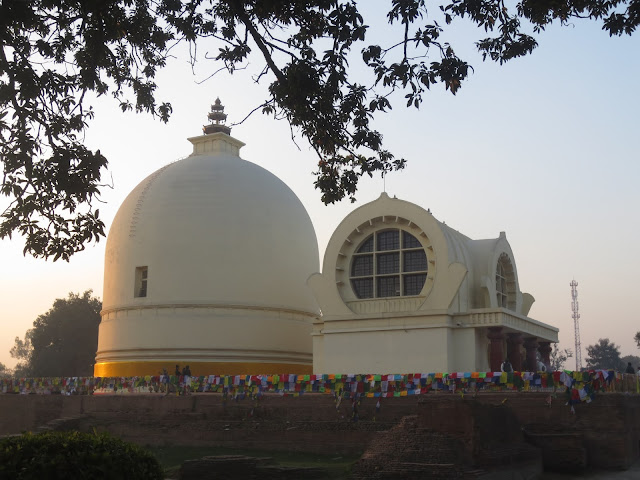Malaysia, the place where I now live and work, is an
extremely interesting country. Not only for its natural beauty, its monuments
old and new, and particularly its multiethnic and multicultural population, but
also for its many religions.
First, there is Islam,
the state and majority religion, then Buddhism, Taoism, Hinduism and
Christianity, in addition to Sikhism, Jainism and animism, practised by the
respective groups: Malays, Chinese, Indians –
particularly Tamils – and dozens of
indigenous groups (including the Dayaks of Borneo and the Orang
Asli, the aboriginals of the peninsula). Buddhism is thus the second religion
of Malaysia, observed by about one-fifth of the entire population. It enjoys an
active and visible presence (as attested by the many Dhamma talks I’ve
attended here, delivered by eminent Buddhist monks and teachers, such as Ajahn
Brahm and Bhante Pemarathana Thera, not to mention meditation retreats). Vesak (the full-moon day commemorating
the birth, enlightenment and death of the Buddha) is a national holiday in Malaysia,
celebrated in Kuala Lumpur with a massive procession that perambulates the city
centre. What makes Malaysia rather unique, however, is that all the schools of
Buddhism are present here: Mahayana, Theravada and even Vajrayana. Mahayana is
the most prominent of the three, particularly but not only of the Pure Land School.
That said, Theravada Buddhism is growing steadily in Malaysia, practised not
only by Thais, Sinhalese and immigrants from other Southeast Asian countries,
but also attracting increasing numbers from the local Chinese community. Furthermore,
Buddhism is the traditional religion of the Orang Siam, the Thai minority
living in the north of the country, where many exquisite Thai temples are to be
found, such as Wat Phothivihan with its 40-metre-long reclining Buddha, and Wat
Machimmaram with its 32-metre-tall meditating Buddha in Kelantan, known for high
levels of tolerance on the part of the local Muslim population.
 |
| The 40-metre long reclining Buddha in Wat Pothivihan (Kelantan) |
 |
| The 32-metre high Buddha on Wat Machimmaram (Kelantan) |
 |
| Wat Machimmaram (Kelantan) |
There are quite a few Theravada temples in other parts the country, too; for example, Wat Chetawan, a fine Thai temple located in Petaling Jaya, the town next to Kuala Lumpur where I reside (a mere ten-minute walk from my house). The oldest Sinhalese temple in the country, the Mahavihara, is particularly active in the neighbourhood of Brickfields in Kuala Lumpur (where the Vesak procession starts). There are also interesting Chinese Buddhist caves near Ipoh, north of Kuala Lumpur (Perak Tong Cave Temple, for example), and I have even visited an interesting Theravada Buddhist‒Hindu cave near Kuantan, on the east coast, known as Gua Cheras. However, perhaps one of the most spectacular Buddhist temples is Chin Swee Caves Temple in Genting Highlands, a must-see if one comes to Malaysia.  |
| The entrance to Perak Tong Cave Temple, Ipoh |
 |
| Statue of Buddha touching the earth (bhumisparsha mudra) inside the Perak Tong |
 |
| Statue of Guan Yin, the Bodhisattva of Compassion, inside Perak Tong |
 |
| The pagoda in Chin Swee Caves Temple (Genting Highlands) |
 |
| The big Buddha in Chin Swee Caves Temple (Genting Highlands) |










Comments
Post a Comment